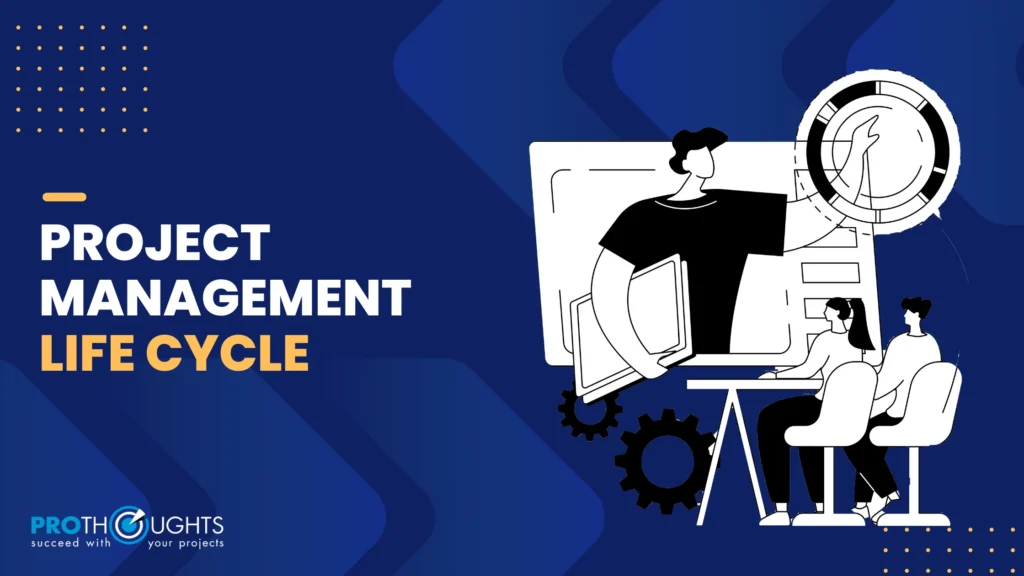
Completing a project successfully includes a lot of challenging tasks. It involves tasks like meeting the expectations of stakeholders, handling the funds, managing risk, and leading the team members. As you can see, a lot is required in the project management life cycle process before a project is completed successfully.
It does not matter what kind of projects you are working on, but without knowing the project management life cycle phases, it will be hard for you to understand and manage the project well.
In this blog, we’re going to go into detail about the project management life cycle, the project management life cycle phases, their types, benefits, and how they can assist one in delivering a well-managed and successful project.
What is the Project Management Life Cycle?
The project management life cycle, or the project life cycle in project management, is truly a high-quality method of portraying the life of a project. It’s the way projects occur; how the periods of a project direct a group from brief through the end. Each project has a beginning and end process; its birth, development, and last but not least, “its death” when the project life cycle in project management is completed.
5 Stages of the Project Management Life Cycle
There are a total of 5 project management life cycle phases, that is:
- Project Initiation- The beginning step of the project
- Project Planning- Planning what and how to do
- Project Execution- Making the project happen
- Project Monitoring and control- Keeping track of the project
- Project Closure- Coming to the end of the Project
Below, each of the stages is explained in detail, and what happens in each of the 5 project management life cycle phases
1. Project Initiation
This is the initial stage of the project, and the main objective of this stage is to portray the project at a high level. Additionally, this stage, for the most part, starts with a business case. This is the point where you will explore whether the project is achievable and if it should be undertaken. If the possibility of testing needs to be done, this is the phase of the project where that will be finished.
Moreover, partners will do their due diligence to help choose if the task is a “go.” If it is given the green signal, you should make a venture contract or an undertaking commencement document (PID) that outlines the requirements and reasons for the project. It should incorporate partners, business needs, and the business case.
Tip: There are a lot of Project Management Certification Courses that stick to PMBOK Guide rules, which are easily accessible online, that you can download to get started.
2. Project Planning
After the project is approved to go ahead based on your project initiation document, business case, and state of work, you step into the planning phase.
Furthermore, in this phase of the Project management life cycle, you diversify the projects into smaller tasks, create your team, and make a schedule for the completion of the task.
You can follow this rule:
- C.L.E.A.R. Goals: A new way of setting goals that involves the environment of the new generation’s fast-paced business era.
- Collaborative: The goal is to encourage employees to work in a team.
- Limited: Employees should be in a limited time frame and scope to keep things manageable.
- Emotional: Goals should come within the passion of employees, and it should be something they can have an emotional attachment to. This can develop the quality of work.
- Appreciable: Divide larger goals into smaller parts so that they can be quickly achieved.
- Refinable: As new conditions arise, you should be flexible enough to adapt the goals and refine them as needed.
Tip: You should make smaller goals within the larger project, and make sure that each goal is achievable within the mentioned period. Remember, smaller goals always have a high potential for achievement. You can get more guidance on this with the help of Project Management Training.
3. Project Execution
This is the stage where we create and fulfill expectations. This generally feels like the heart of the project since tons of work is going on during this time, similar to status reports and meetings, improvement updates, and execution reports. A “Set-up” meeting for the most part implies the beginning of the Project Execution phase, where the groups involved are guided regarding their responsibilities.
Tasks to complete during the Execution Phase include:
- Creating Team
- Appoint resources
- Execute project management plans
- Acquisition of the management if required
- The PM coordinates and oversees project execution
- Set up global positioning frameworks
- We execute undertaking tasks
- Status Meetings
- Update project plan as needed
- Alter project designs depending on the situation
While the project observing stage has an alternate set of requirements, these two stages frequently happen at the same time.
4. Project Monitoring and Control
This phase is tied to knowing the project progression and execution, and approving that all incident matches up with the project management plan. Moreover, project managers will utilize the KPIs to determine whether the project is on target. A Project Manager will ordinarily pick one to five of these KPIs to quantify project execution:
- Project Objectives: Measuring if a project is on time and a financial plan is a sign that the project will meet partner objectives.
- Quality Deliverables: This decides whether the particular task expectations are being met.
- Cost Tracking and Efforts: PMs will represent the effort and cost of assets to check whether the financial plan is on target. Hence, this kind of following educates whether a project will meet its finish date, dependent on current execution.
- Project Performance: This screen displays the project information. It assumes control of the range of issues that arise and the speed at which they are resolved. Additionally, these can happen from unexpected obstacles and degree changes.
During this time, PMs may have to change timetables and resources to guarantee the project is on target.
5. Project Closure
This stage addresses the completed project. Some PMs organize small gatherings to thank project participants for their efforts. When a project concludes, a PM will often convene a meeting to evaluate what went well in a project and identify project failures. Thus, this is particularly useful to comprehend exercises learned so that upgrades can be made for future projects.
However, when the project is finished, PMs have a couple of tasks to finish. Create a project punch list for unfinished tasks and collaborate with colleagues to complete them. Also, finalize the last project budget plan and set up the last project report. At last, they should gather all project documentation and deliverables and keep them in a single place.
Types of Project Management Life Cycle
There are various types of project management life cycle, each having its own steps and systems. Below are some of the common types of project management life cycle.
1. Waterfall
The waterfall life cycle is an old method where the project goes through each phase in line, that is, initiation, planning, execution, monitoring, and closure. Each phase ends before the next one begins, and making any changes is generally tough once a phase is completed. This method works best for projects with clear and defined requirements and a few changes.
2. Iterative
In the iterative life cycle, the project is completed in repeated cycles called iterations. Each iteration produces a partial version of the final product, which is checked and improved in the next cycle. This approach is helpful when the overall goal is clear, but details may change over time.
3. Agile
The adaptive or agile life cycle is highly flexible and focuses on collaboration and frequent feedback from stakeholders. The project progresses in short cycles, and the scope can change based on evolving requirements. This approach is ideal for projects in rapidly changing or uncertain environments, like software development.
4. Incremental
The incremental life cycle divides the project into smaller, manageable parts called increments. Each increment delivers a usable portion of the final product, and the project gradually builds toward the complete outcome. This approach reduces risk and makes it easier to manage complex projects step by step.
5. Hybrid
The hybrid life cycle mixes elements of both predictive and adaptive approaches. Some parts of the project follow a structured, planned approach, while others are handled flexibly to adapt to change. This is useful when a project has a mix of stable requirements and areas that may need adjustments along the way.
Each type of project management life cycle has its own pros and cons, so choosing what is right for your project becomes important.
Benefits of an Effective Project Life Cycle in Project Management
Now you will learn about some benefits of the effective project management life cycle:
1. Project Success Rates
Risks decrease, and project objectives are more likely to become achievable by adhering to a proper set of phases. This methodical approach facilitates efficient task organization and problem-solving, thus, which makes it simpler to stay on course and produce positive results.
2. Stakeholders’ Satisfaction
Stakeholder confidence increases through open communication and frequent updates during the project. Keeping everyone updated on developments and modifications guarantees that they are aware of what is going on and feel engaged. This transparency keeps project stakeholders on board with the project and helps avoid misunderstandings.
3. Resource Utilization
Appropriate use of resources is guaranteed by efficient planning and resource management. By doing this, circumstances where too many resources are allocated to a single task or where resources are not utilized sufficiently are avoided. Furthermore, effective management ensures that resources are distributed effectively, increasing the project’s likelihood of success.
4. Improve Project Visibility
Monitoring project progress through several phases ensures transparency and accountability. Furthermore, it keeps team members accountable for their work and helps everyone understand how the project is going. This method makes it simpler to see problems early and maintain project momentum.
Conclusion
In conclusion, knowing the Project Management Life Cycle is important for handling projects from start to end successfully. Every stage from initiation to closure makes sure that projects are planned, executed, monitored, and completed effectively, helping achieve the desired goals while reducing risks. To gain the skills and knowledge needed to master this process, consider earning your PMP certification with ProThoughts. With expert guidance and practical insights, ProThoughts makes learning easier and equips you to plan and execute projects confidently, turning challenging tasks into achievable goals.

